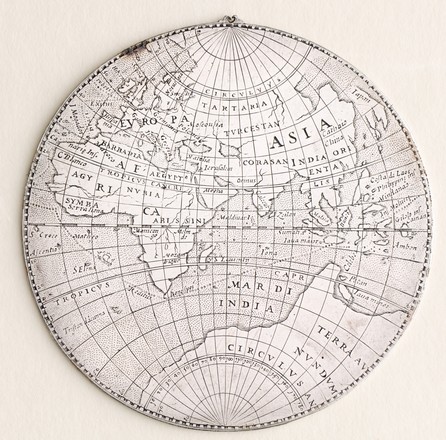
Medal commemorating the voyage of Sir Francis Drake
c1589
Silver
Bequest of Sir William Dixson, 1952
DN / M 1144 / Item a
Silver
Bequest of Sir William Dixson, 1952
DN / M 1144 / Item a
In 1577 the English explorer and adventurer Francis Drake was secretly commissioned by Queen Elizabeth I and her ministers to raid Spanish ports and merchant ships along the Pacific coast of the Americas.
This fine silver medal is the earliest dated map of Drake's daring and profitable voyage, which generated enormous riches for the queen’s treasury and made Drake the second European to circumnavigate the world (the first was Magellan). It was engraved by the Dutch cartographer and instrument maker Michael Mercator, grandson of the great cartographer and mathematician Gerard Mercator. The eastern hemisphere is shown on one side of the medal, and the western hemisphere on the other. The base maps are derived from a map of the Americas which had been published in Hakluyt’s De Orbe Novo, (On the New World) in 1587. The medal is believed to be one of nine still in existence.


 Back to list
Back to list